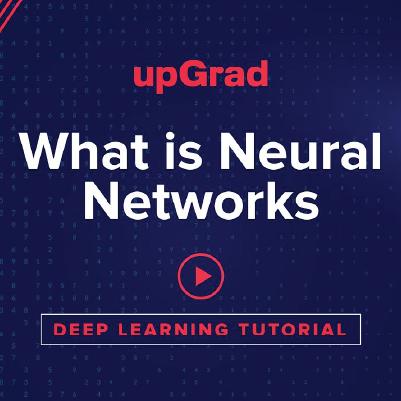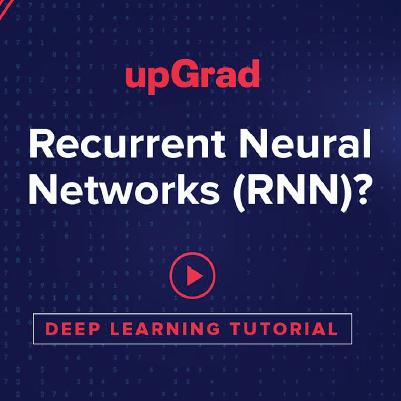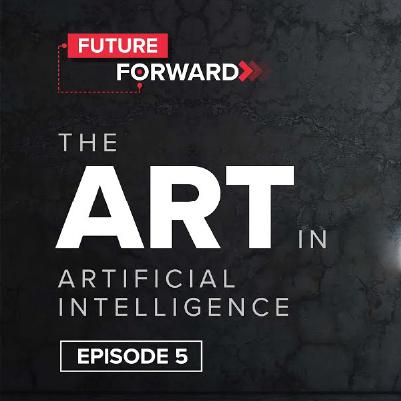Working professionals
Fresh graduates
- Study abroad
- Offline centres
More
Deep Learning Courses Online
Deep learning is a specific type of machine learning that attains outstanding flexibility and power by learning to exemplify the world as an encapsulated grouping of concepts.
-d365049d54604e59b9241feaed93b89e%20(1)-8072fb06b4b24a5b955a79ddc42fdda6.jpeg&w=3840&q=75)
Overview of Learning Deep Learning Skill Courses with upGrad
What Will You Learn in upGrad’s Deep Learning Skill Courses?
AI & ML Course Instructors
Learn From The Best
Learn AI and Machine Learning from expert instructors in the field, and get insights from the forefront of AI & ML research.
8
Instructors
8
Industry Experts
AI & ML Projects
Learn by Doing
Engage in real-world AI/ML projects and apply your learning to practical scenarios in our AI and Machine Learning online learning classes.
17+
Projects
Career Paths After Completing a Deep Learning Skill Course
Placements in AI & Machine Learning Courses
Our Placement Numbers
Transform your career with our certification in Artificial Intelligence and ML, boasting strong placement records. Level up now by getting offers.
Top Recruiters










Success Stories
What Our Learners Have To Say
AI & ML Videos
You Might Like To Watch
Learner Support and Services
How Will upGrad Supports You
Receive unparalleled guidance from industry mentors, teaching assistants, and graders
Receive one-on-one feedback from our seasoned faculty on submissions and personalized feedback to improvement
Our Syllabus is designed to provide you with ample of industry relevant knowledge with examples
Why Choose upGrad for the Deep Learning Course?
Frequently Asked Questions on Deep Learning
1. What is included in a typical deep learning course syllabus?
A deep learning course syllabus usually includes neural networks, CNNs, RNNs, deep neural networks, autoencoders, and practical applications like image recognition and NLP. Courses also cover hands-on projects for real-world experience.
2. What are some real-world applications of deep learning?
Deep learning is widely used in industries like healthcare (disease prediction), e-commerce (recommendation engines), finance (fraud detection), and automotive (self-driving cars). These applications are often taught in deep learning classes online.
3. Do I need a programming background to take a deep learning course online?
While not mandatory, a basic understanding of Python and machine learning subjects helps. Many deep learning courses online-like those on upGrad-offer beginner-friendly modules before diving into advanced concepts.
4. What are the commonly used algorithms in Deep Learning?
The most commonly used algorithms in Deep Learning are recurrent neural network (RNN), convolutional neural network (CNN), Deep belief network (DEB), Long Short-Term Memory networks (LSTM), stacked autoencoders, and Deep Boltzmann machine (DBM), etc.
5. Which universities offer deep learning programs with upGrad?
upGrad partners with top universities like IIIT Bangalore and Liverpool John Moores University (LJMU) to deliver advanced machine learning and deep learning courses with globally recognized credentials.
6. What kind of certification will I receive from upGrad's deep learning courses?
Upon successful completion, you’ll earn an industry-recognized deep learning certification, often co-branded with upGrad and its university partner, which boosts your LinkedIn profile and job prospects.
7. What tools and projects are included in upGrad’s deep learning syllabus?
Projects involve real datasets and tools like TensorFlow, Keras, PyTorch, and scikit-learn. upGrad’s deep learning course outline focuses on applied learning with use cases in image recognition, speech analysis, and NLP.
8. What is the cost of learning AI and deep learning with upGrad?
Short-term AI and deep learning courses can start around ₹20,000, while full-time programs like the Master’s in Machine Learning & AI can cost up to approx. ₹6 lakhs. upGrad also offers free deep learning courses with certificates.
9. Can I pay for my deep learning course in instalments?
Yes, upGrad offers EMI and flexible payment options starting at low monthly rates-making it easier to invest in a deep learning certification without financial stress.
10. Are there any refunds if I withdraw from the course midway?
Yes, upGrad has a clear refund policy. If you choose to withdraw early, the applicable terms will depend on the specific program and the time of withdrawal. It's recommended to review the refund policy at the time of enrollment to ensure clarity and avoid any misunderstandings.


upGrad Learner Support
Talk to our experts. We are available 7 days a week, 10 AM to 7 PM
Indian Nationals
Foreign Nationals
Disclaimer
The above statistics depend on various factors and individual results may vary. Past performance is no guarantee of future results.
The student assumes full responsibility for all expenses associated with visas, travel, & related costs. upGrad does not .






















-7f4b4f34e09d42bfa73b58f4a230cffa.webp&w=128&q=75)
-ae8d039bbd2a41318308f8d26b52ac8f.svg)






















-39a9e7a7278a441ea08a60a1f45b4913.png&w=128&q=75)





































